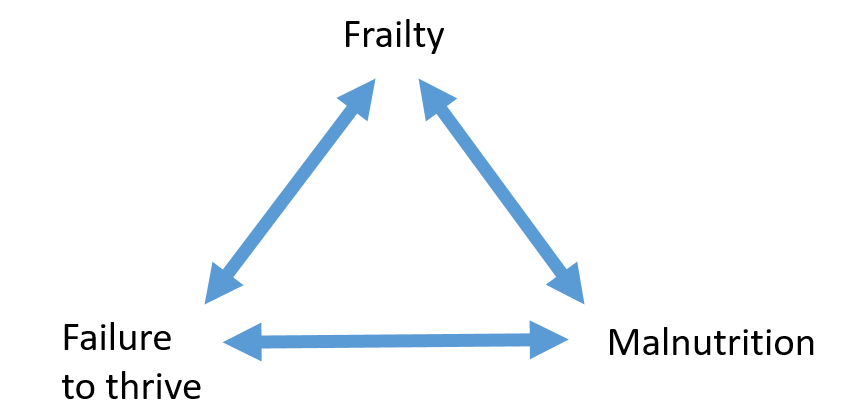Knowing when to test (vs) when not to test is the hallmark of a seasoned clinician.
But how to you teach this?
Follow this 🧵 to help your trainees navigate uncertainty.
#MedTwitter #FOAM #diagnosticreasoning
@medrants @AdamRodmanMD @EmilyAbdoler @DxRxEdu @rabihmgeha
1/17
But how to you teach this?
Follow this 🧵 to help your trainees navigate uncertainty.
#MedTwitter #FOAM #diagnosticreasoning
@medrants @AdamRodmanMD @EmilyAbdoler @DxRxEdu @rabihmgeha
1/17

The art & science of #diagnosticreasoning is still in its infancy but we now at least have a shared language to navigate the unknown and have meaningful conversations.
2/17
2/17

That said, much nuance and variability exist with how clinicians approach and explain the diagnostic process to trainees.
At some point, the conversation usually ends with something like...
“… b/c it won’t change management”
3/17
At some point, the conversation usually ends with something like...
“… b/c it won’t change management”
3/17
But isn’t there always a hypothetical scenario when that next step / test COULD change management?
4/17
4/17
Sure… if there’s a lack of understanding in disease prevalence, test accuracy, or illness scripts.
The data may not add up to a junior trainee like it would a senior for a number of reasons.
5/17
The data may not add up to a junior trainee like it would a senior for a number of reasons.
5/17
But let’s assume data collection, problem representation, & hypothesis generation are sound.
You still have some level of UNCERTAINTY to deal with & communicate.
And not everyone has time to discuss merits of testing based on Bayesian stats.
So let’s simplify it...
6/17
You still have some level of UNCERTAINTY to deal with & communicate.
And not everyone has time to discuss merits of testing based on Bayesian stats.
So let’s simplify it...
6/17
A test may not change management b/c…
a) It’s not aligned w/ pt goals (e.g. comfort)
b) It won’t alter tx plan (e.g. brain bx in small cell lung ca)
c) It’s premature (e.g. PFTs w/in 6 wks of post-viral cough)
OR...
7/17
a) It’s not aligned w/ pt goals (e.g. comfort)
b) It won’t alter tx plan (e.g. brain bx in small cell lung ca)
c) It’s premature (e.g. PFTs w/in 6 wks of post-viral cough)
OR...
7/17
d) It won’t change your mind (e.g. HLA B27 in young male w/ inflam back pain, sacroileitis on x-ray, & enthesitis who is Rf negative)
It’s this last point on how we “explain” our level of certainty that matters in #MedEd
8/17
It’s this last point on how we “explain” our level of certainty that matters in #MedEd
8/17
Let’s assume a-c do NOT apply and we’re strictly discussing whether a test will increase or decrease our certainty.
How CURIOUS should we be?
9/17
How CURIOUS should we be?
9/17
Think of your level of curiosity and threshold as inversely related.
As curiosity goes up, the THRESHOLD to test should go down (and vice versa).
10/17
As curiosity goes up, the THRESHOLD to test should go down (and vice versa).
10/17

With increasing UNCERTAINTY, there is more room for curiosity to drive down the threshold of testing.
11/17
11/17

Likewise as your level of certainty increases, there is less room for curiosity to inspire additional testing.
The THRESHOLD remains high even if students, residents, or patients remain curious (e.g. “I want you check an HLA B27”).
This is called approaching SATURATION.
12/17
The THRESHOLD remains high even if students, residents, or patients remain curious (e.g. “I want you check an HLA B27”).
This is called approaching SATURATION.
12/17

Think of the saturation point like a curiosity sponge. You are now closed to other possibilities.
Additional tests won’t change your mind.
The preponderance of data is in.
The shoe fits.
13/17
Additional tests won’t change your mind.
The preponderance of data is in.
The shoe fits.
13/17
The harms of reaching a saturation point pre-maturely (anchoring bias, premature closure, etc) is management inertia (doing w/o thinking). You may miss the dx!
(vs)
The harms of reaching a saturation point too late is inappropriate, unnecessary, and low value testing.
14/17
(vs)
The harms of reaching a saturation point too late is inappropriate, unnecessary, and low value testing.
14/17
In short,
1) Make dx reasoning transparent.
2) Go beyond “b/c it won’t change managemt” - explain WHY
3) Certainty is not required for all managemt scripts (see a-c above)
4) Curiosity & threshold are inversely related.
5) Saturation & uncertainty are inversely related.
15/17
1) Make dx reasoning transparent.
2) Go beyond “b/c it won’t change managemt” - explain WHY
3) Certainty is not required for all managemt scripts (see a-c above)
4) Curiosity & threshold are inversely related.
5) Saturation & uncertainty are inversely related.
15/17
Testing could be low value for any of the reasons listed above.
It's incumbent on #clinicianeducators to explain WHY.
Is SATURATION (borrowed from #HPE lit) helpful??? Please comment 👇
See references below and follow if you like common sense approaches to #MedEd
16/17
It's incumbent on #clinicianeducators to explain WHY.
Is SATURATION (borrowed from #HPE lit) helpful??? Please comment 👇
See references below and follow if you like common sense approaches to #MedEd
16/17
Ref:
1) pubmed.ncbi.nlm.nih.gov/32349018/
2) Saturation in qual research: exploring its conceptualization & operationalization - PMC (nih.gov)
3) Management Reasoning: A Toolbox for Educators : Academic Medicine (lww.com)
Slide 2 table credit to #1
17/17
1) pubmed.ncbi.nlm.nih.gov/32349018/
2) Saturation in qual research: exploring its conceptualization & operationalization - PMC (nih.gov)
3) Management Reasoning: A Toolbox for Educators : Academic Medicine (lww.com)
Slide 2 table credit to #1
17/17
• • •
Missing some Tweet in this thread? You can try to
force a refresh

 Read on Twitter
Read on Twitter






